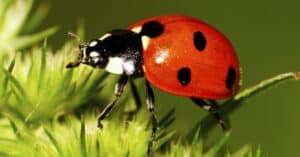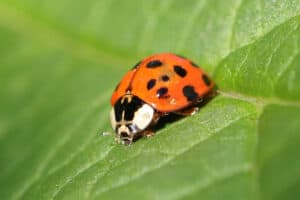Ladybugs are cute and colorful insects in the Coccinellidae family. You may also see them called ladybeetles or ladybird beetles. There are at least 5,000 different species, and they are referred to in many nursery rhymes and folklore. Most of them are bright colors, and they are one of the more ‘popular’ insects in our gardens. They are also useful in controlling the number of aphids. In the winter, however, they head inside resulting in some people looking for help in dealing with a ladybug infestation!
Why Do Ladybugs Enter Homes?
Ladybugs do not like cold winters. As the temperatures drop, they look for somewhere warmer to hide. They undergo a type of hibernation called diapause. They gather together to conserve energy and share heat in logs and outbuildings. Some, however, will choose to spend the winter in human homes. You can often find them nestled together in the corner of basements and attics or near doors or windows. In spring, they will reemerge and head back outside. While we may find these creatures delightful in our gardens, we may not be so pleased to find hordes of them in our house!
Do You Have to Treat a Ladybug Infestation?
No, you do not have to do anything about the ladybugs in your house. Unlike many other insects, they do not damage property and are not harmful to humans or pets. In many cultures, a ladybug in the home is considered good luck.
However, some homeowners would prefer it if they were not sharing their houses with quite so many of them! There can be groups of hundreds of bugs that may secrete an orange liquid that stains furniture. A few people are allergic to the Asian species of ladybug.
If you do decide that you want to deal with a ladybug infestation this winter, here are our seven tips.
1. Prevent Entry With Weather Strips and Sealant
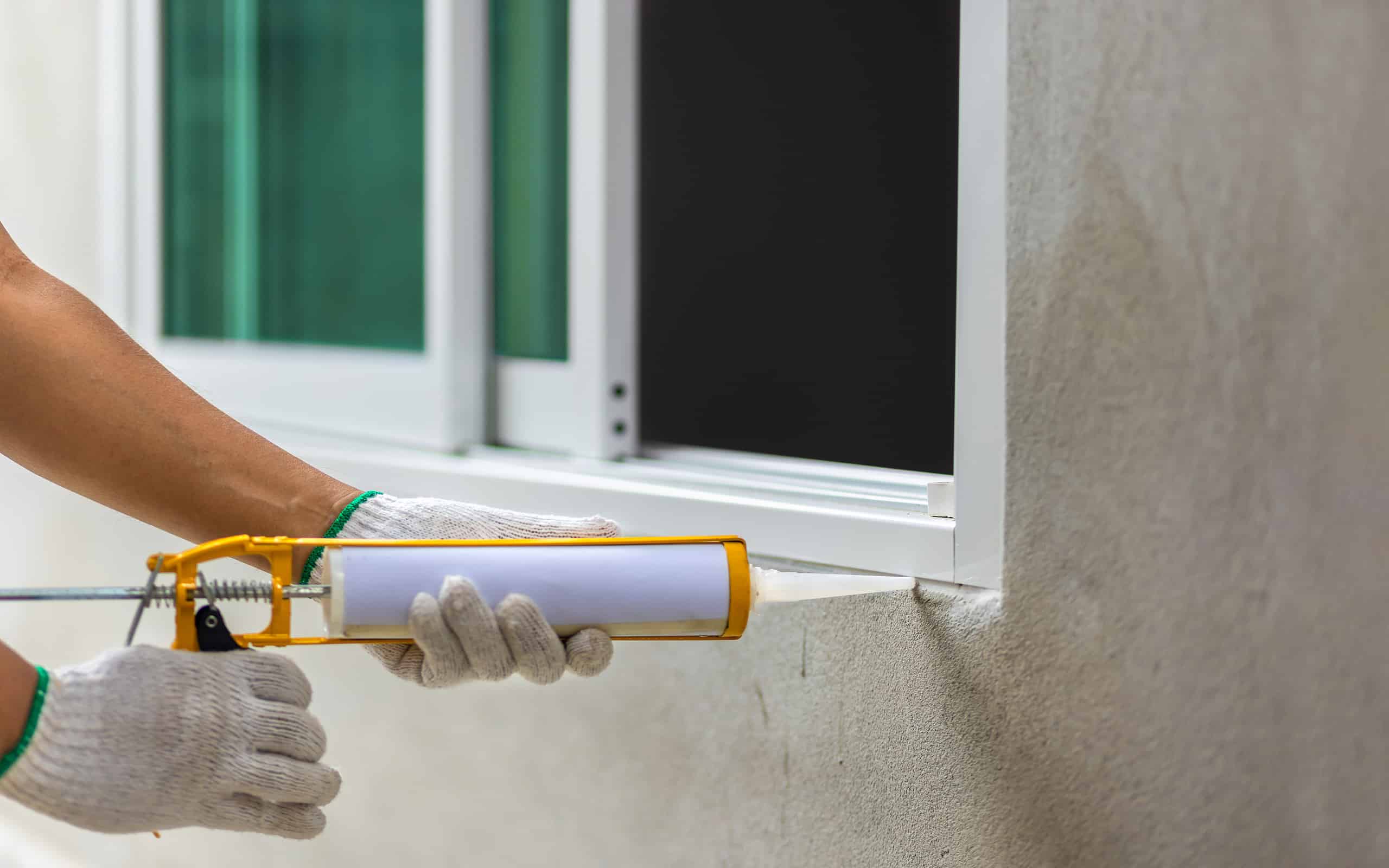
Sealing cracks can keep ladybugs out.
©Toa55/iStock via Getty Images
There are physical changes that you can make to your home to prevent ladybugs from getting in. Weatherstripping around potential entry points can be highly effective and costs very little. Peel-and-stick rolls of weatherstripping are easy to obtain, and all you have to do is cut them to the correct lengths and stick them on. An added advantage is that they also keep out cold draughts and water. The downside is that they do not last forever and may need to be replaced each year. Small openings and cracks (for example, around utility pipes) can also be sealed with caulk.
2. Block Windows With Window Screens
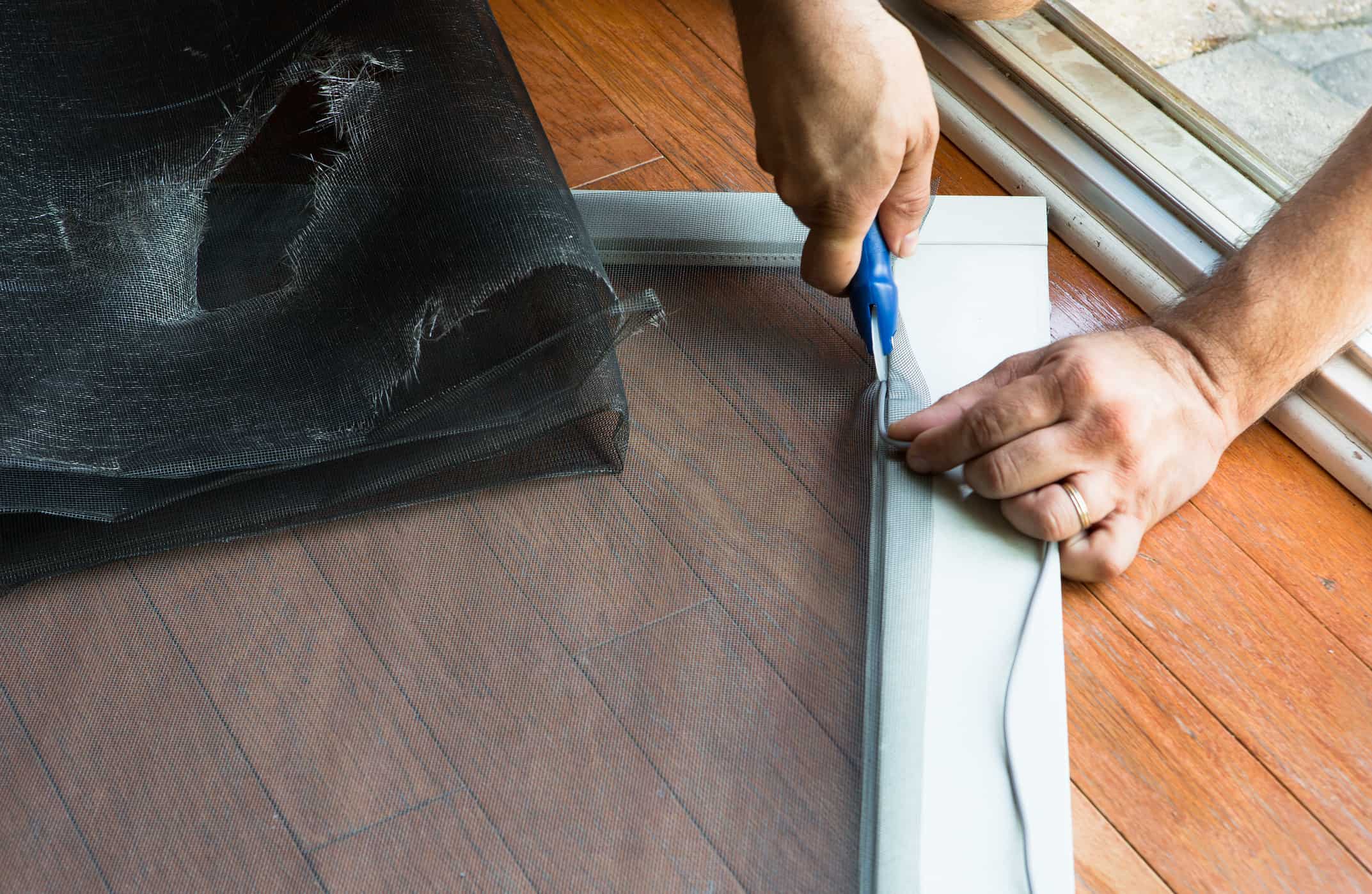
Window screens keep ladybugs out of houses.
©ozgurcoskun/iStock via Getty Images
A more expensive but longer-lasting solution is a window screen. These are sheets of fine mesh in a frame that fits up against your existing windows. They are secured in place using pressure clips. Screens create an additional barrier to entry, even if the windows are open in the fall.
3. Chemical deterrents

Ladybugs are deterred by cloves, bay leaves, and citrus.
©Jana Kollarova/Shutterstock.com
There are some substances that ladybugs hate, and that will keep them from entering your home. Placing cloves and/or bay leaves (in bags) around entrances can be highly effective. Focus your efforts on the doors and windows facing heavily planted areas, as this is where they are most likely to enter from. Ladybugs are not keen on the odor of citrus, so citronella or citrus-scented candles can also do the trick, as can a few drops of the essential oils. Take great care about where you place this if you have pets or children. If you prefer, you could put a few drops of lemon, lime, or orange oil in some water and spritz potential entry points. Ladybugs also hate chrysanthemums!
4. Disrupt Communication

Vinegar disrupts ladybug communication.
©focal point/Shutterstock.com
If one ladybug has discovered just how warm and snug your home is, the last thing you want is for it to communicate this to its friends! Ladybugs communicate using pheromones, which are special chemicals used for communication. You can disrupt the ladybug’s pheromone message by spraying the areas where you have seen ladybugs with a vinegar solution. You make this by combining one-part white vinegar with one-part water. This vinegar spray is also a natural insecticide that will kill any ladybugs it comes in contact with.
5. Vacuum

Vacuuming is a humane way to relocate ladybugs.
©Chalabala/iStock via Getty Images
This is one of the most humane ways to remove ladybugs from your home because it does not kill them. However, you will need to empty the dust bag of your vacuum first. Vacuum them up and then release them outside. Alternatively, you simply sweep them using a dustpan and brush.
6. DIY light trap

DIY fly traps can be adapted for ladybugs.
©grafikazpazurem/iStock via Getty Images
If you want to catch the ladybugs when they start moving around before they can reach the rest of your house, you could construct a trap. These are useful for dark areas such as basements and attics. Cut the top off a large plastic bottle and place an LED light on the bottom. Then, turn the top section upside down and put it back in the bottom part, creating a funnel effect. Ladybugs entering the bottle, attracted to the light, will not be able to get back out. You can then release trapped bugs in your garden. This is the same as a fruit fly trap but using light instead of fruit!
7.Killing ladybugs
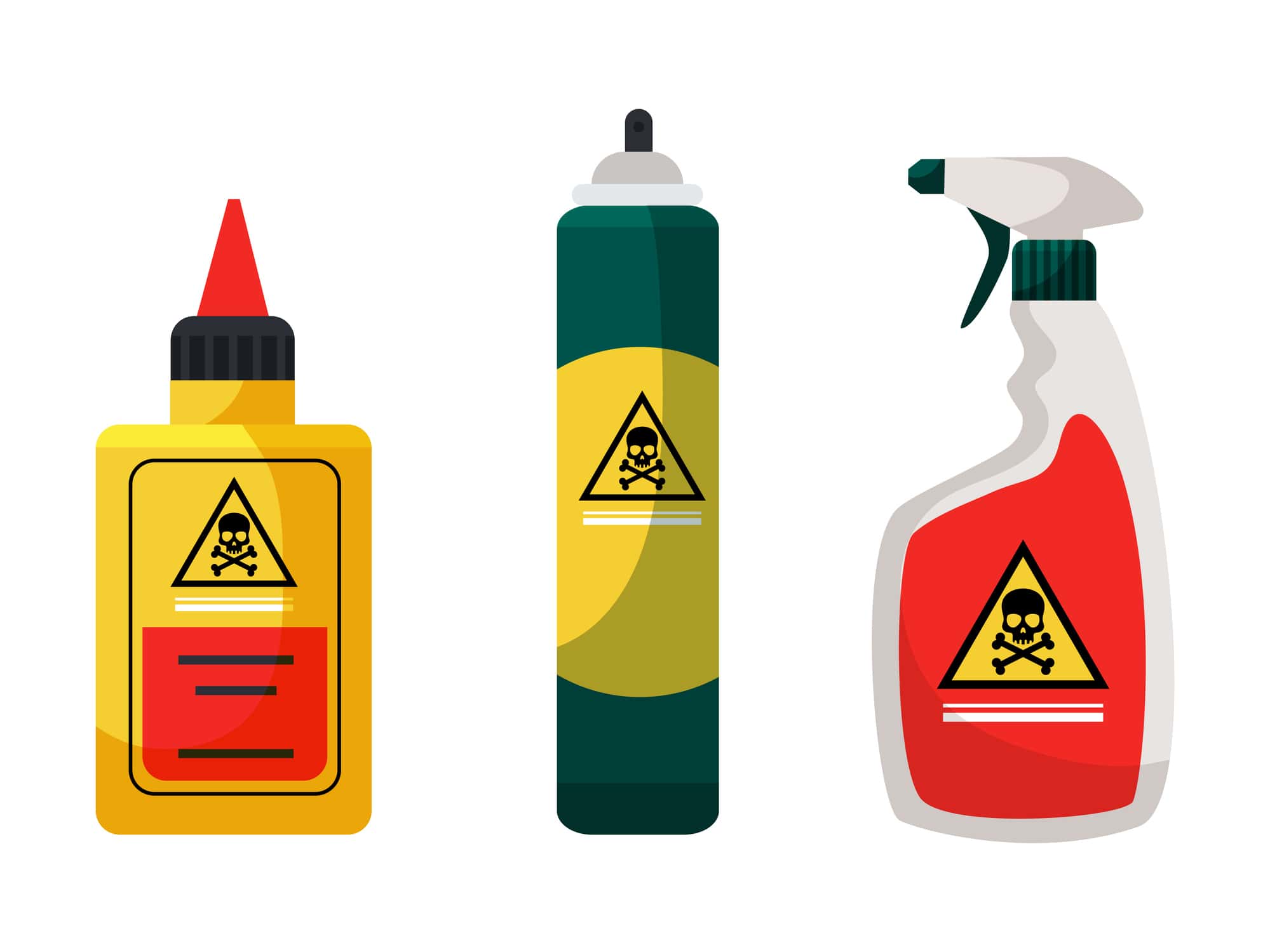
Insecticide sprays
©Irina Cheremisinova/iStock via Getty Images
If you are dealing with a large infestation that is really bothering you, you may have to resort to killing at least some of the bugs. A natural way to do this is to use a bowl containing water and a few drops of dish soap. The soap reduces the surface tension of the water so the bugs will not be able to get back out when they land in the bowl. Alternatively, you can use an aerosol insecticide spray. However, it is important that you make sure that the product is designed for ladybug elimination and suitable for indoor use. Take great care in selecting the product if you have pets, fish, or children in your home.
The photo featured at the top of this post is © iStock.com/AlessandraRC
Thank you for reading! Have some feedback for us? Contact the AZ Animals editorial team.




